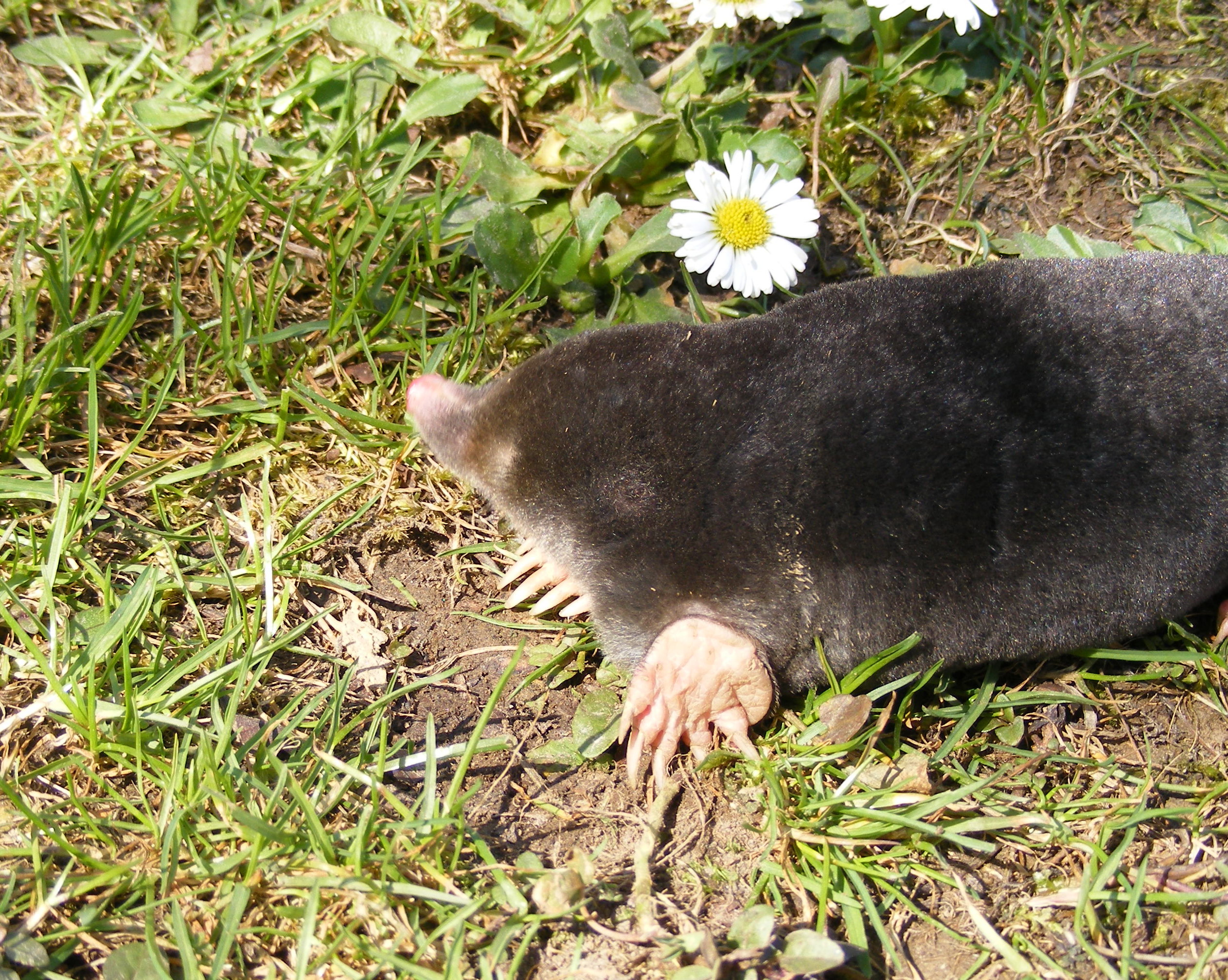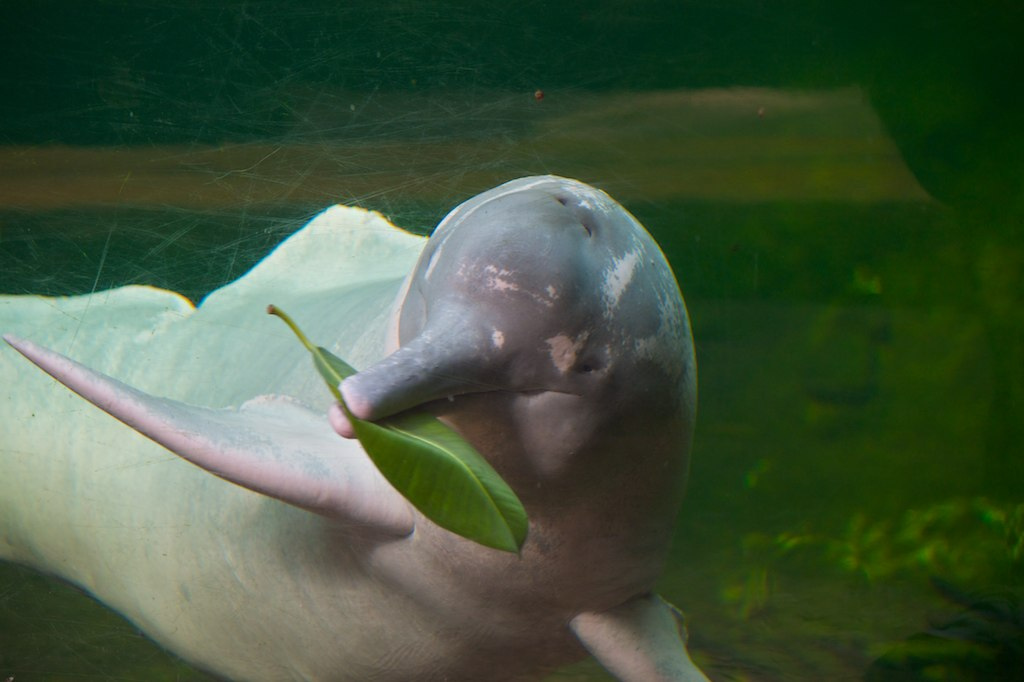|
Desmans
The desman, a snouted and naked-tailed diving insectivore of the tribe Desmanini (also considered a subfamily, Desmaninae), belongs to one of two Eurasian species of the mole family, Talpidae. This tribe consists of two monotypic genera of semiaquatic insectivores found in Europe: one in Russia and the other in the northwest of the Iberian peninsula and Pyrenees. Both species are considered to be vulnerable. They have webbed paws and their front paws are not well-adapted for digging. Desmans were much more diverse and widespread during the Miocene, with one genus, ''Gaillardia'', being present in North America. Both living species are thought to have derived from the fossil genus '' Archaeodesmana.'' The list of species is: *Genus ''Desmana'' **Russian desman (''D. moschata'') *Genus ''Galemys'' **Pyrenean desman (''G. pyrenaicus'') * Genus †'' Archaeodesmana'' Miocene-Pliocene, Europe * Genus †'' Gaillardia'' Miocene, North America * Genus †'' Mygalinia'' Late Miocene, ... [...More Info...] [...Related Items...] OR: [Wikipedia] [Google] [Baidu] |
Talpidae
The family Talpidae () includes the moles (some of whom are called shrew moles and desmans) who are small insectivorous mammals of the order Eulipotyphla. Talpids are all digging animals to various degrees: moles are completely subterranean animals; shrew moles and shrew-like moles somewhat less so; and desmans, while basically aquatic, excavate dry sleeping chambers; whilst the quite unique star-nosed mole is equally adept in the water and underground. Talpids are found across the Northern Hemisphere of Eurasia and North America (although none are found in Ireland nor in the Americas south of northern Mexico), and range as far south as the montane regions of tropical Southeast Asia. The first talpids evolved from shrew-like animals which adapted to digging late in the Eocene in Europe. '' Eotalpa anglica'' is the oldest known mole, it was discovered in the Late Eocene deposits of Hampshire Basin, UK. The most primitive living talpids are believed to be the shrew-lik ... [...More Info...] [...Related Items...] OR: [Wikipedia] [Google] [Baidu] |
Russian Desman
The Russian desman (''Desmana moschata'') (russian: выхухоль ''vykhukhol'') is a small semiaquatic mammal that inhabits the Volga, Don and Ural River basins in Russia, Ukraine and Kazakhstan. It constructs burrows into the banks of ponds and slow-moving streams, but prefers small, overgrown ponds with abundance of insects, crayfish and amphibians. The Russian desman often lives in small groups of two to five animals, that are usually not related, and appears to have a complex (but largely unstudied) communication and social system. Taxonomy The Russian desman is one of two surviving species of the tribe '' Desmanini'', the other being the Pyrenean desman. Despite its outward similarity to muskrats (a rodent), the Russian desman is actually part of the mole family Talpidae in the order Eulipotyphla. Like other moles, it is functionally blind and obtains much of its sensory input from the touch-sensitive Eimer's organs at the end of its long, bilobed snout. However ... [...More Info...] [...Related Items...] OR: [Wikipedia] [Google] [Baidu] |
Galemys Pyrenaicus
The Pyrenean desman also called Iberian desman (''Galemys pyrenaicus'') is a small semiaquatic, globally threatened mammal related to moles and shrews, and, along with the Russian desman (''Desmana moschata''), is one of the two extant members of the tribe Desmanini. The species occurs in north and central parts of Spain and Portugal, French Pyrenees, and Andorra, but severe range contractions have been documented across its geographic distribution. Description The Pyrenean desman is long with a rounded scale-covered tail of , and weighs . Pyrenean desmans have a long, sensitive nasal trompe provided with hypertrophic vibrissae and chemo-/mechanosensitive Eimer’s organs helping prey detection, and large webbed feet with fringed hairs to increase the swimming surface, and can close off their nostrils and ears to stop water penetration. The desman's body is covered in dark, brownish fur, with the exception of its tail and nose. The nose is black and is covered in vibrissae ... [...More Info...] [...Related Items...] OR: [Wikipedia] [Google] [Baidu] |
Mole (animal)
Moles are small mammals adapted to a subterranean lifestyle. They have cylindrical bodies, velvety fur, very small, inconspicuous eyes and ears, reduced hindlimbs, and short, powerful forelimbs with large paws adapted for digging. The word “mole” refers to any species in the family Talpidae, which means “mole” in Latin. Moles are found in most parts of North America, Europe and Asia. Moles may be viewed as pests to gardeners, but they provide positive contributions to soil, gardens, and ecosystem, including soil aeration, feeding on slugs and small creatures that eat plant roots, and providing prey for other wildlife. They eat earthworms and other small invertebrates in the soil. Terminology In Middle English, moles were known as ''moldwarp''. The expression "don't make a mountain out of a molehill" (which means "exaggerating problems") was first recorded in Tudor times. By the era of Early Modern English, the mole was also known in English as ''mouldywarp'', a w ... [...More Info...] [...Related Items...] OR: [Wikipedia] [Google] [Baidu] |
Aquatic Mammals
Aquatic and semiaquatic mammals are a diverse group of mammals that dwell partly or entirely in bodies of water. They include the various marine mammals who dwell in oceans, as well as various freshwater species, such as the European otter. They are not a taxon and are not unified by any distinct biological grouping, but rather their dependence on and integral relation to aquatic ecosystems. The level of dependence on aquatic life varies greatly among species. Among freshwater taxa, the Amazonian manatee and river dolphins are completely aquatic and fully dependent on aquatic ecosystems. Semiaquatic freshwater taxa include the Baikal seal, which feeds underwater but rests, molts, and breeds on land; and the capybara and hippopotamus which are able to venture in and out of water in search of food. Mammal adaptation to an aquatic lifestyle vary considerably between species. River dolphins and manatees are both fully aquatic and therefore are completely tethered to a life in the wa ... [...More Info...] [...Related Items...] OR: [Wikipedia] [Google] [Baidu] |
Europe
Europe is a large peninsula conventionally considered a continent in its own right because of its great physical size and the weight of its history and traditions. Europe is also considered a subcontinent of Eurasia and it is located entirely in the Northern Hemisphere and mostly in the Eastern Hemisphere. Comprising the westernmost peninsulas of Eurasia, it shares the continental landmass of Afro-Eurasia with both Africa and Asia. It is bordered by the Arctic Ocean to the north, the Atlantic Ocean to the west, the Mediterranean Sea to the south and Asia to the east. Europe is commonly considered to be separated from Asia by the watershed of the Ural Mountains, the Ural River, the Caspian Sea, the Greater Caucasus, the Black Sea and the waterways of the Turkish Straits. "Europe" (pp. 68–69); "Asia" (pp. 90–91): "A commonly accepted division between Asia and Europe ... is formed by the Ural Mountains, Ural River, Caspian Sea, Caucasus Mountains, and the Blac ... [...More Info...] [...Related Items...] OR: [Wikipedia] [Google] [Baidu] |
BBC News Online
BBC News Online is the website of BBC News, the division of the BBC responsible for newsgathering and production. It is one of the most popular news websites, with 1.2 billion website visits in April 2021, as well as being used by 60% of the UK's internet users for news. The website contains international news coverage, as well as British, entertainment, science, and political news. Many reports are accompanied by audio and video from the BBC's television and radio news services, while the latest TV and radio bulletins are also available to view or listen to on the site together with other current affairs programmes. BBC News Online is closely linked to its sister department website, that of BBC Sport. Both sites follow similar layout and content options and respective journalists work alongside each other. Location information provided by users is also shared with the website of BBC Weather to provide local content. From 1998 to 2001 the site was named best news website at ... [...More Info...] [...Related Items...] OR: [Wikipedia] [Google] [Baidu] |
Desmana
''Desmana'' is a genus of mole that contains a single living species, the Russian desman ''(Desmana moschata)''. A number of fossil species are known from throughout Eurasia. The oldest species is ''Desmana marci'' from the earliest Pliocene of Spain , image_flag = Bandera de España.svg , image_coat = Escudo de España (mazonado).svg , national_motto = '' Plus ultra'' ( Latin)(English: "Further Beyond") , national_anthem = (English: "Royal March") , .... It was probably derived from earlier moles of the genus '' Archaeodesmana''. ''D. marci'' likely gave rise to ''D. verestchagini'', who may have given rise to younger species such as the living desman. References {{Taxonbar, from=Q15114089 Mammal genera Mammal genera with one living species Taxa named by Johann Anton Güldenstädt Mammals described in 1777 ... [...More Info...] [...Related Items...] OR: [Wikipedia] [Google] [Baidu] |
Galemys
''Galemys'' is a genus of mole containing the living Pyrenean desman ''(Galemys pyrenaicus)'' and several fossil species. Many of these extinct species were far more widespread than the living species; for example, the Early Pleistocene ''Galemys kormosi'' was found in freshwater habitats throughout much of Europe, including the British Isles The British Isles are a group of islands in the North Atlantic Ocean off the north-western coast of continental Europe, consisting of the islands of Great Britain, Ireland, the Isle of Man, the Inner and Outer Hebrides, the Northern Isles (O .... ''Galemys'' probably evolved in the Early Pliocene from a species in the extinct genus '' Archaeodesmana''. References {{Taxonbar, from=Q19816805 Mammal genera Mammal genera with one living species ... [...More Info...] [...Related Items...] OR: [Wikipedia] [Google] [Baidu] |
Miocene
The Miocene ( ) is the first geological epoch of the Neogene Period and extends from about (Ma). The Miocene was named by Scottish geologist Charles Lyell; the name comes from the Greek words (', "less") and (', "new") and means "less recent" because it has 18% fewer modern marine invertebrates than the Pliocene has. The Miocene is preceded by the Oligocene and is followed by the Pliocene. As Earth went from the Oligocene through the Miocene and into the Pliocene, the climate slowly cooled towards a series of ice ages. The Miocene boundaries are not marked by a single distinct global event but consist rather of regionally defined boundaries between the warmer Oligocene and the cooler Pliocene Epoch. During the Early Miocene, the Arabian Peninsula collided with Eurasia, severing the connection between the Mediterranean and Indian Ocean, and allowing a faunal interchange to occur between Eurasia and Africa, including the dispersal of proboscideans into Eurasia. During the la ... [...More Info...] [...Related Items...] OR: [Wikipedia] [Google] [Baidu] |



